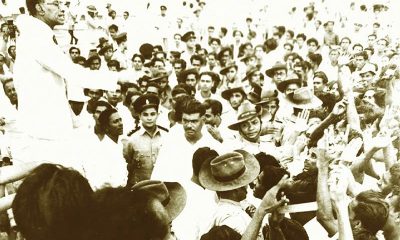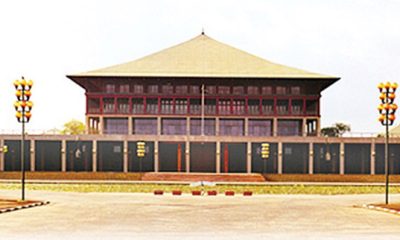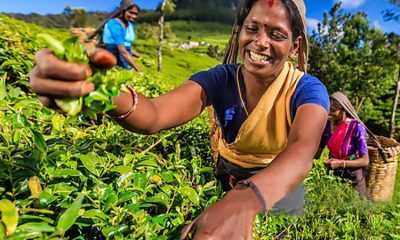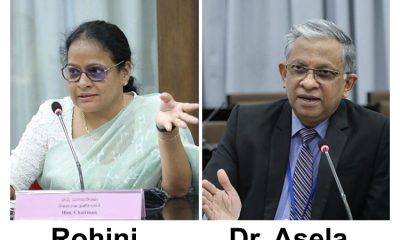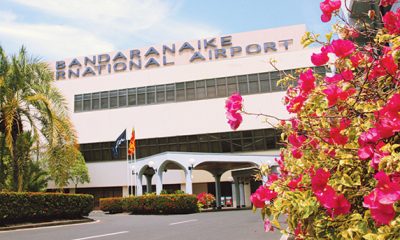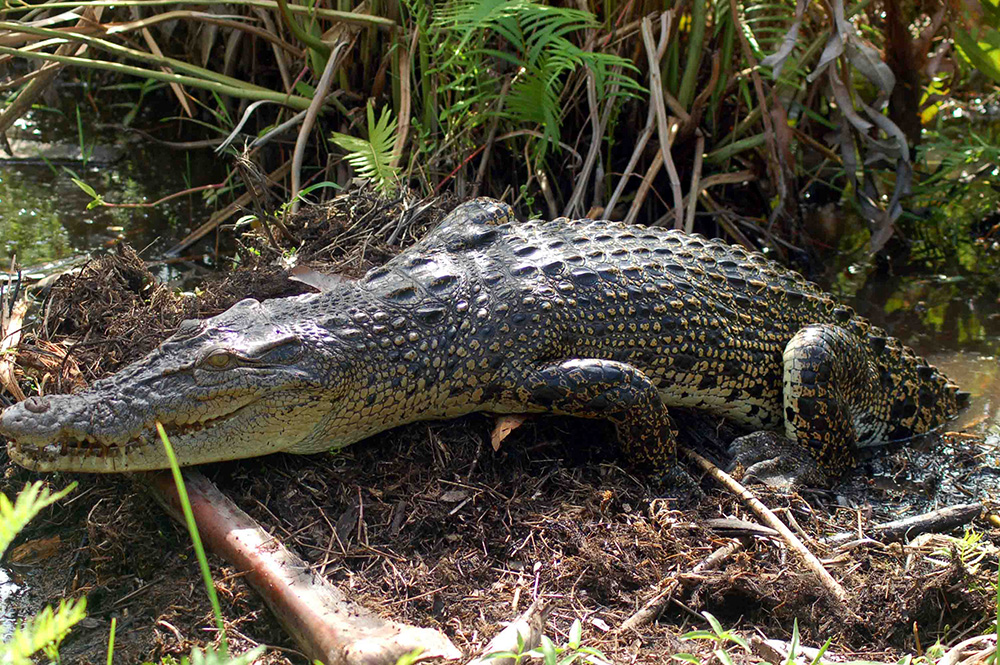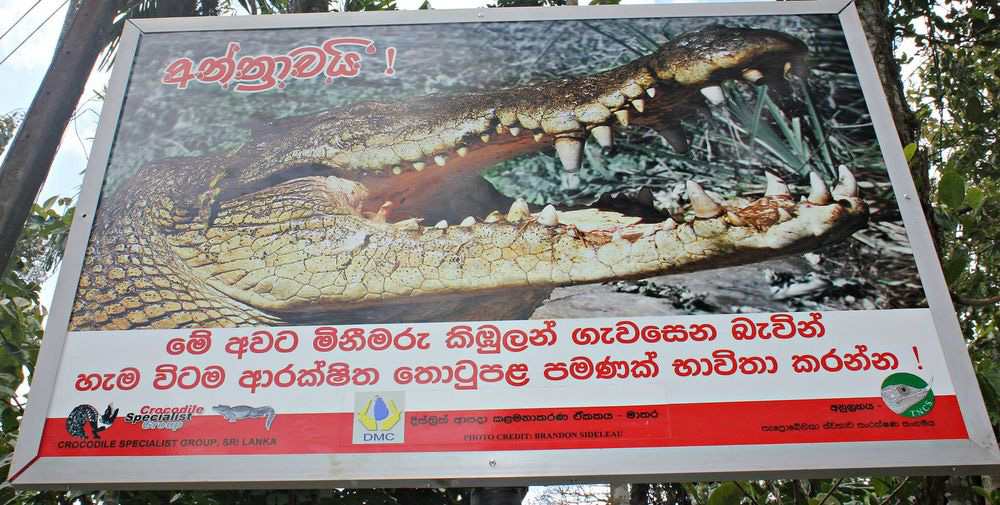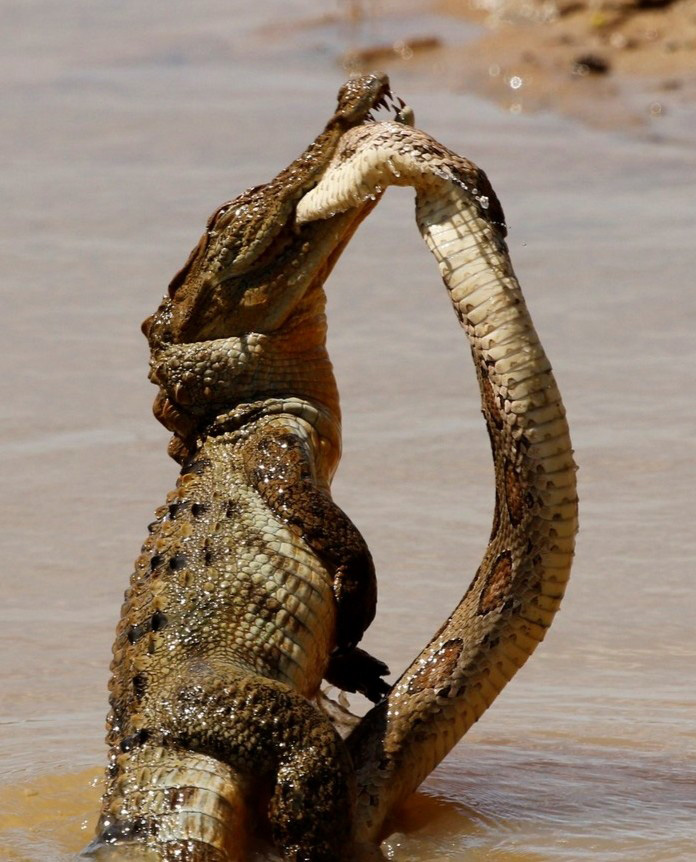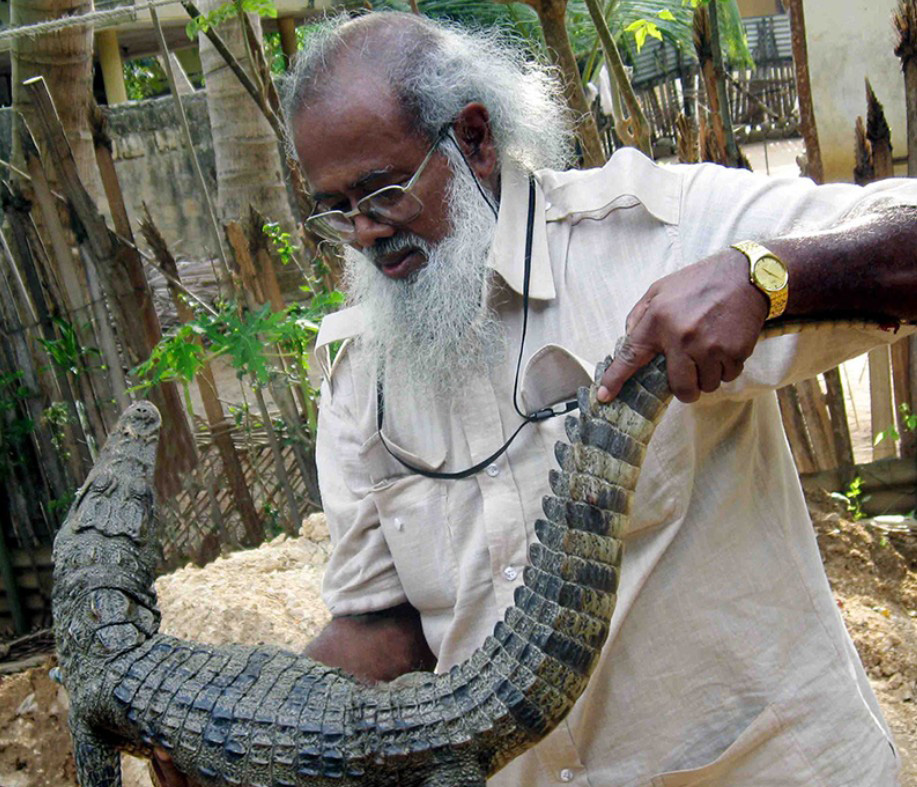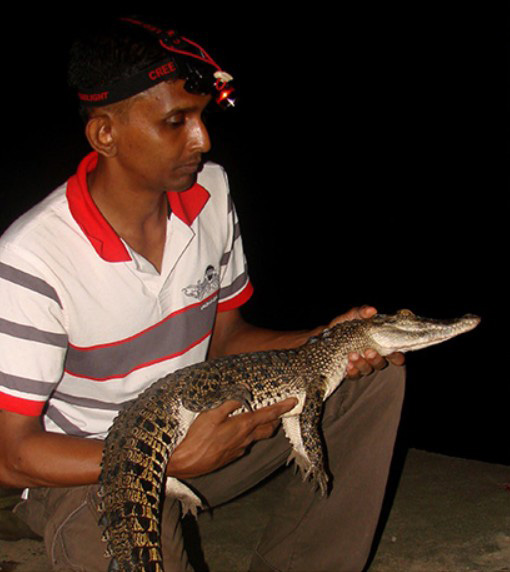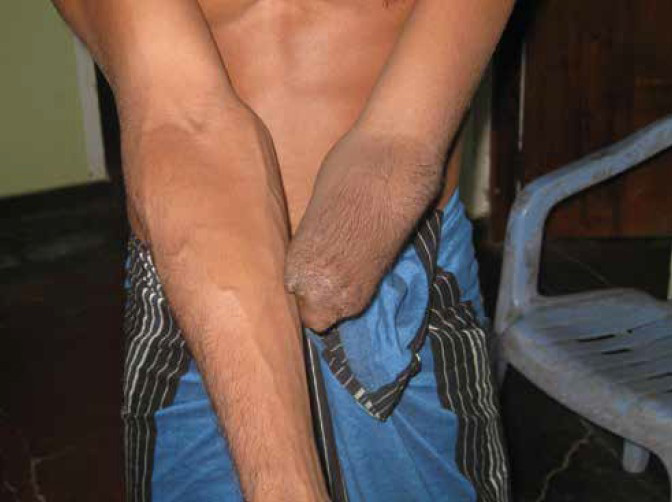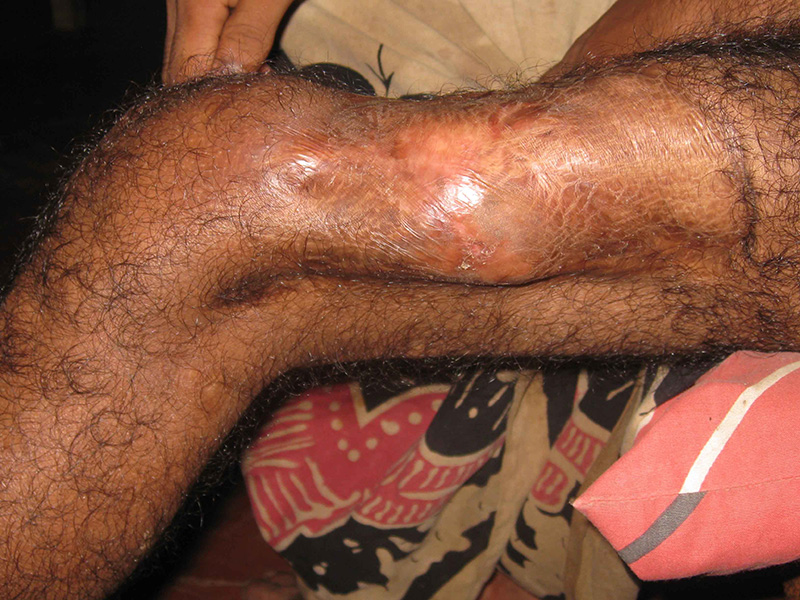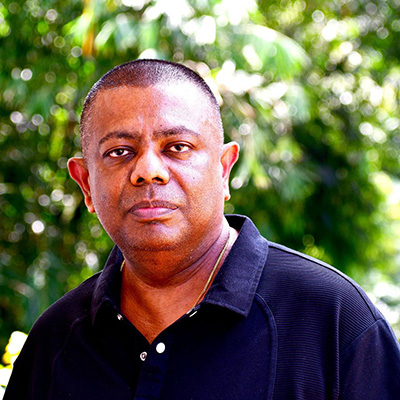Features
Joining in Psychosocial work back home in Sri Lanka
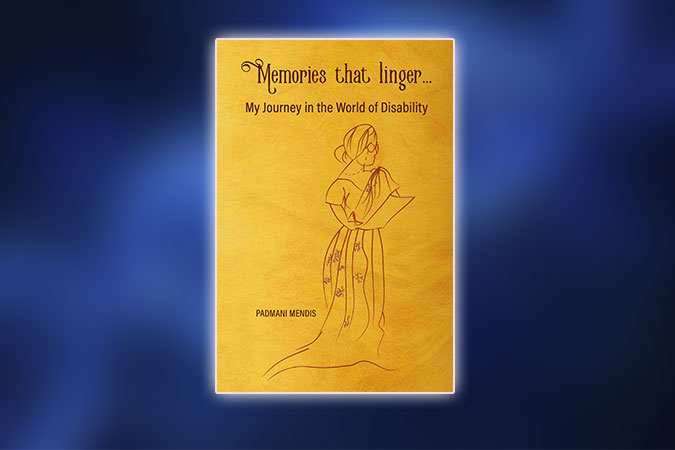
(Excerpted from Memories that linger…..My journey in the world of disability by Padmani Mendis)
When my memories come back to Sri Lanka they call out urgently, “Remember first the Psychosocial Project!” For the PSP was unique. It was implemented during the long conflict for our people affected by it in the northern and eastern parts of our country. Led by Gameela Samarasinghe and Ananda Galapatti with Harini Amarasuriya, Kusala Wettasinghe and others.
Later, but still also during the conflict, with some of these and other committed psychosocial workers memories of meeting needs this time of our “Ranaviru” or disabled soldiers. This was with the Ranaviru Seva Authority, RVSA, under the chairmanship of Dr. Narme Wickramasinghe with the able assistance of Dr. Visakha Dissanayake. The RVSA worked in the areas where our armed forces came from.
Within both the PSP and the RVSA I had the privilege of being invited to work with our psychosocial workers to see to the disability needs of civilians in the first project and of members of our armed forces in the second with whom they interacted. Those were difficult times for our people, but as always, our young professionals stepped forward to serve their fellow country women and men.
Introducing Community-based Rehabilitation to the NGO Sector in Sri Lanka
To continue with memories of my journey, I have to go back now to the year 1979 and the month of August, when I returned home after my first assignment for the WHO in Geneva. Whilst I was carrying out my task participating with so many others in the global development of the concept, strategy and technology of CBR (Community Based Rehabilitation), my thoughts were constantly of how these would fit so well in Sri Lanka to benefit our disabled people.
So, no sooner I returned to Colombo, I made an appointment to meet the Deputy Leader of the NGO Sarvodaya, which in Sri Lanka has been the most well-known NGO in community development. The work of Sarvodaya was based on social mobilisation, just as CBR is. I had come to know Mrs. Sita Rajasooriya when she was a Commissioner in the Girl Guide Movement and I was a teenage girl guide.
Over a chat about what I had been doing in Geneva, I gave her a copy of the WHO Manual and asked her whether she would look at it. She called me a year or so later to tell me that Sarvodaya was implementing a CBR Project in the district of Kalutara in the Western province. I have been there and elsewhere with Sarvodaya several times, visiting with them their people in their homes.
Over the next several years, other NGOs called on me to help them start implementing CBR in many parts of Sri Lanka – Fridsro in Kandy in the Central province, Navajeevana in Tangalle in the Southern province and SEED (Social, Economic and Educational Developers) in Vavuniya in the Northern province were some of the larger ones. All the projects had funding partnerships with outside donors. With evidence of visible and measurable impact, projects grew. In the long-term however potential growth was sometimes stunted by limited funding.
I shall come back to Fridsro later and its relationship with Government CBR programmes under the leadership of Gihan Galekotuwa. Fridsro sans Gihan Galekotuwa has now had to fade out of the realm of disability due to unavailability of sponsorship.
Sarvodaya, Navajeevana and SEED led respectively by Dr. A.T. Ariyaratne, and later his son Vinya, the late Kumarini Wikramasuriya and Ponnambalam Narasingham, together with many other NGOs continue their work in disability promoting CBR. The last of the three named above gave his formal name reluctantly when I asked him just now on the telephone, emphasising that he preferred being called “Singham”. This is what I had always known him by.
Time spent with these organisations so long ago are among my most memorable. With SEED it was focused on teaching their staff. SEED had been within sight of the conflict. We used for teaching the top floor of their three-storey building with a roof made of green metal sheets. Made the room very, very warm. But the breeze that wafted through its open sides compensated somewhat.
Here we had some of the most participatory of my teaching sessions in Sri Lanka. SEED staff were active, interested, motivated. Both the heat generated in the atmosphere and that in debate called for frequent ice breakers. These were innovative and enjoyable. But mostly I sat out, needing for myself a mental and physical break from all that dynamism around me.
The only hotel in Vavuniya was filled to capacity with families from the North fleeing the conflict. I stayed there only once. Having to jump over a smelly open sewer made so by disrepair to get into the hotel was off-putting. The disrepair extended to the inside of the hotel because such was the time. Compensating for this the management was concerned and kind, and had found for me a small room with many stairs to climb to get to it. I had all my meals here in my room because there was no other place for it. It was simply furnished with a bed, desk and chair.
There was no kitchen either and the hotel bought me my food from outside. An upset tummy on a few occasions indicated to me that I should find other lodgings next time. So on my following visits, SEED found for me a convent to stay at. Here, living with nuns, I felt cherished. I was their first paying guest. They were truly beautiful with their warmth and their empathy.
Other Experiences with NGOs
Many years later, and still during the long conflict, I was back North again twice on my journey. The first time I was in Jaffna. It was with Save the Children Fund (SCF), UK. They sent me so I could advise them how they could include actions for disabled children within their Northern programme.
Much of Jaffna district at the time was under the control of the Tamil Tigers. SCF had to obtain special permission for me to come to Jaffna, which, it turned out, they did quite easily. I believe it was easy because someone had got my name wrong. On the letter granting permission it was written “Pathmini”, the way it is in Tamil. I was given permission to travel anywhere I needed. I was not even stopped at checkpoints. Everywhere I went, it seemed as though I was expected.
The next work assignment in the North at this time included coming back to Vavuniya. I was here with Hameed of UNICEF as part of a series of teaching assignments I did to introduce to district and divisional officials issues related to disability in children. And to discuss with them how they may deal with such issues during the course of their work, so attempting to include childhood disability in development strategies during this time of conflict.
The series also covered Puttalam, Mannar and Trincomalee, stretching out across our island. As far as I know, those workshops were never followed up. I hope the seed had been planted in many an interested mind and would have taken root in some. It was a difficult time for all.
Before my memories of the NGO sector move on, there is another that asks for recall. Save the Children Fund, UK showed much concern for disabled children, making their work inclusive to the extent possible. With that in mind, they had me develop for them in partnership with teachers, parents, children and others, “A Guide for Preschool Teachers”. SCF had it published in all three languages and it was widely used, especially in CBR. It helped bring into the preschool mainstream many young children at an early age. This was a task that gave me much satisfaction.
This was soon after the Tsunami of 2006. Looking back, it is clear that activities of the International NGOs at this time was at a peak. Sri Lanka was the beneficiary of generous help from a caring world.
How CBR came to be in government
Dudley Dissanayake was the Director of the School of Social Work managed by the Department of Social Services. This was located on Bagatalle Road in a two-storied house. Rent was paid for by Government. One day I received a call from Dudley asking if we could meet. We met the next day. He told me about the reason for his call.
He said that quite recently he had found in the back seat of the pick-up truck that he drove, a photocopy of a book. He did not know how it had got there, but his staff shared the use of the pick-up truck. They used this also to transport students for official tasks.
The book had been made by WHO and was about disabled people. It had my name on the cover along with two others. Dudley wanted to know what it was about. I was of course only too happy to share with him the work I was doing in Geneva with my colleagues Gunnel Nelson and Einar Helander and with innumerable others spread throughout many countries.
This was now 1981 which the UN had declared as the “International Year of the Disabled”. It was customary for the UN to do such things on subjects that they felt required the attention of member states. To mark its significance, Dudley felt that students of social work should have an exposure with disabled people and disability. We discussed how this could be done.
The result was that two students expressed their wish to carry out their final year project study testing the usefulness of the Manual in Sri Lanka. Dudley asked me if I could help them, and I believe I was fortunate to be able to do so. I said that first I would have the Manual translated into Sinhala.
For this purpose, I obtained the willing help of two physiotherapists, formerly favourite students. By name Wettimuny Silva and Somadasa Mohettige. While they did the translation in their own homes in the evenings after work, we met at my dining table in my home in Swarna Road for joint sessions which, as you can imagine, were called for quite often. We had the Sinhala Manual ready in no time. Wetta and Some, as their friends called them, and I maintain the bond we established at that time and continue our friendship.
First Field Tests in Sri Lanka
Dudley had the necessary photocopies made. I was soon walking the two villages of Meegolla and Kahandawelipotha in the Kurunegala district with the two students of social work. They had selected between them 20 children who had disability all under the age of 14 years. At the end of the six months of the project, 19 of the 20 showed improvements. Some of those children still live vividly in my memory.
One was Mala, aged eight years, who had cerebral palsy. Her mother cared for her with utmost love. She bathed, dressed and fed Mala in the morning and sat her on a chair at a window. Mala spent her day watching passers-by on the road.
That was until the two students of social work came into their lives. Soon Mala was learning to walk using bars her father made in the garden using long bamboos. She was helping her mother in the kitchen. Children from the neighbourhood came to her house to play with her. Hopefully in a few months she would go to the village school. The students arranged for the local social service worker to come to see Mala. The social service worker will get a wheelchair for Mala.
Another was 11-year-old Nandani. She too did not go to school. Her parents could not see how she could do that, seeing she could not speak. But she could hear. Like Ntchadi in faraway Serowe in Botswana, she too looked on longingly when her young siblings went to school. Counselling from the students, an appointment with the principal and the education officer and Nandani was in school.
When we visited the school before the project ended, Nandani was already showing signs of leadership in the classroom. She was a bright girl. She will surely catch up with her peers before long.
Dudley shared with UNICEF Colombo the study and the results of the work of the students. He was able to secure from UNICEF formal support for the development of CBR as project studies for a number of his students over the next few years. But within three years UNICEF, with the Department of Social Work and the help of students, started a large CBR project in Anuradhapura district.
In time Dudley, climbing the administrative ladder step by step reached the Ministry of Social Welfare. It was first as Senior Assistant Secretary, then as Additional Secretary, and finally reached the peak as Secretary of the Ministry. Dudley took CBR there with him. Dudley had the Manual translated into Tamil and introduced its extended use in the North. From then on CBR grew within Government with generous allocations directly from the national budget.
Disability Studies Unit – Early Years in Sri Lanka
I shared with you in the section above how the University of Kelaniya, in 1993 with support from Sweden, set up the Disability Studies Unit or DSU and of my role in it. I also continued in that section to share with you my journey in disability during my time there, focusing on aspects of international work. This is a suitable time perhaps to reflect on my journey with the DSU in Sri Lanka.
It was Anoja Wijeyesekera, at the time a Programme Officer at UNICEF Colombo who introduced the DSU to the Ministry of Social Welfare. Viji Jegarasasingham was the Additional Secretary at the time. Mrs. J. was one dynamic lady with a mission. That mission was to ensure the effective functioning of her ministry and other institutions under her purview. She was later promoted as Secretary and held that post for many years until her retirement from Government service.
Viji Jegarajasingham, our Mrs J., set up within the Ministry a Resource Group on CBR with just five of us as members. One of them was Gihan Galekotuwa or Gale who was then the Disability Programme Head at the NGO Fridsro. Our Resource Group strengthened the relationship in disability work between this ministry and that of health and of employment. This was with the aim of planting the seed of multi-sectoral cooperation to benefit disabled people with a wider perspective of their rights.
Gale was convinced that CBR was the way to go if the rights of disabled children and adults were to be fulfilled with their inclusion and participation in their communities and in society at large. Fridsro had developed their CBR capacity by implementing CBR themselves in parts of the Central Province where they were located. Starting in Poojapitya Division and spreading to 11 others in the Kandy district. These were developed as learning and teaching areas.
Gale soon had Fridsro draw up an MOU with the Ministry of Social Welfare to provide technical and other support to the Ministry to improve their CBR programme both in quality and in coverage. This agreement and action continued for many years, even after I was no longer at the DSU.
Within a few years many disabled children and adults spread out in most of Sri Lanka’s districts had been reached. A change was being brought about in their lives, families and communities. Monitored continuously and evaluated at intervals by Fridsro.
Working with me at the DSU was Somadasa Kodikara, a former student of mine at the School of Physiotherapy. Representing the DSU “Kodi” and I worked with the Ministry and with Fridsro as a threesome to reach disabled people in more than 50% of Sri Lanka’s districts during those few years. The DSU had roles in both teaching and in monitoring. We soon learned that Sri Lanka government workers were loath to submit written reports. As for us, we were happy monitoring through field visits. For us it was any excuse to go to the people.
During our years together at the DSU, Kodi and I continued to evaluate the WHO Manual in the two languages with periodic revisions and continuous improvement. Fridsro provided financial support for publishing them in both languages for field use. Kodi and I also produced and published through the DSU much teaching-learning material for both community workers and for their divisional and district supervisors.
Soon after the DSU was born, we were invited to link up with the Global Disability Database maintained jointly by Uppsala University and AHRTAG in London. Before I left the DSU in 1998, we had an agreement drawn up with the International Health Unit of London University and the Hospital for Children, Great Ormond Street to start the Education of Speech and Language Therapists or SLTs.
. The DSU has come a long way. And it will continue its own journey as it grows unendingly.
Features
When floods strike: How nations keep food on the table

Insights from global adaptation strategies
Sri Lanka has been heavily affected by floods, and extreme flooding is rapidly becoming one of the most disruptive climate hazards worldwide. The consequences extend far beyond damaged infrastructure and displaced communities. The food systems and supply networks are among the hardest hit. Floods disrupt food systems through multiple pathways. Croplands are submerged, livestock are lost, and soils become degraded due to erosion or sediment deposition. Infrastructural facilities like roads, bridges, retail shops, storage warehouses, and sales centres are damaged or rendered inaccessible. Without functioning food supply networks, even unaffected food-producing regions struggle to continue daily lives in such disasters. Poor households, particularly those dependent on farming or informal rural economies, face sharp food price increases and income loss, increasing vulnerability and food insecurity.
Many countries now recognie that traditional emergency responses alone are no longer enough. Instead, they are adopting a combination of short-term stabilisation measures and long-term strategies to strengthen food supply chains against recurrent floods. The most common immediate response is the provision of emergency food and cash assistance. Governments, the World Food Programme, and other humanitarian organisations often deliver food, ready-to-eat rations, livestock feed, and livelihood support to affected communities.
Alongside these immediate measures, some nations are implementing long-term strategic actions. These include technology- and data-driven approaches to improve flood preparedness. Early warning systems, using satellite data, hydrological models, and advanced weather forecasting, allow farmers and supply chain operators to prepare for potential disruptions. Digital platforms provide market intelligence, logistics updates, and risk notifications to producers, wholesalers, and transporters. This article highlights examples of such strategies from countries that experience frequent flooding.
China: Grain Reserves and Strategic Preparedness
China maintains a large strategic grain reserve system for rice, wheat, and maize; managed by NFSRA-National Food and Strategic Reserves Administration and Sinograin (China Grain Reserves Corporation (Sinograin Group), funded by the Chinese government, that underpins national food security and enables macro-control of markets during supply shocks. Moreover, improvements in supply chain digitization and hydrological monitoring, the country has strengthened its ability to maintain stable food availability during extreme weather events.
Bangladesh: Turning Vulnerability into Resilience
In recent years, Bangladesh has stood out as one of the world’s most flood-exposed countries, yet it has successfully turned vulnerability into adaptive resilience. Floating agriculture, flood-tolerant rice varieties, and community-run grain reserves now help stabilise food supplies when farmland is submerged. Investments in early-warning systems and river-basin management have further reduced crop losses and protected rural livelihoods.
Netherlands, Japan: High-Tech Models of Flood Resilience
The Netherlands offers a highly technical model. After catastrophic flooding in 1953, the country completely redesigned its water governance approach. Farmland is protected behind sea barriers, rivers are carefully controlled, and land-use zoning is adaptive. Vertical farming and climate-controlled greenhouses ensure year-round food production, even during extreme events. Japan provides another example of diversified flood resilience. Following repeated typhoon-induced floods, the country shifted toward protected agriculture, insurance-backed farming, and automated logistics systems. Cold storage networks and digital supply tracking ensure that food continues to reach consumers, even when roads are cut off. While these strategies require significant capital and investment, their gradual implementation provides substantial long-term benefits.
Pakistan, Thailand, Indonesia, and Vietnam: Reform in Response to Recurrent Floods
In contrast, Pakistan and Thailand illustrate both the consequences of climate vulnerability and the benefits of proactive reform. The 2022 floods in Pakistan submerged about one-third of the country, destroying crops and disrupting trade networks. In response, the country has placed greater emphasis on climate-resilient farming, water governance reforms, and satellite-based crop monitoring. Pakistan as well as India is promoting crop diversification and adjusting planting schedules to help farmers avoid the peak monsoon flood periods.
Thailand has invested in flood zoning and improved farm infrastructure that keep markets supplied even during severe flooding. Meanwhile, Indonesia and Vietnam are actively advancing flood-adapted land-use planning and climate-resilient agriculture. For instance, In Vietnam’s Mekong Delta, pilot projects integrate flood-risk mapping, adaptive cropping strategies, and ecosystem-based approaches to reduce vulnerability in agricultural and distribution areas. In Indonesia, government-supported initiatives and regional projects are strengthening flood-risk-informed spatial planning, adaptive farming practices, and community-based water management to improve resilience in flood-prone regions. (See Figure 1)
 The Global Lesson: Resilience Requires Early Investment
The Global Lesson: Resilience Requires Early Investment
The global evidence is clear: countries that invest early in climate-adaptive agriculture and resilient logistics are better able to feed their populations, even during extreme floods. Building a resilient future depends not only on how we grow food but also on how we protect, store, and transport it. Strengthening infrastructure is therefore central to stabilising food supply chains while maintaining food quality, even during prolonged disruptions. Resilient storage systems, regional grain reserves, efficient cold chains, improved farming infrastructure, and digital supply mapping help reduce panic buying, food waste, and price shocks after floods, while ensuring that production capacity remains secure.
Persistent Challenges
However, despite these advances, many flood-exposed countries still face significant challenges. Resources are often insufficient to upgrade infrastructure or support vulnerable rural populations. Institutional coordination across the agriculture, disaster management, transport, and environmental sectors remains weak. Moreover, the frequency and scale of climate-driven floods are exceeding the design limits of older disaster-planning frameworks. As a result, the gap between exposure and resilience continues to widen. These challenges are highly relevant to Sri Lanka as well and require deliberate, gradual efforts to phase them out.
The Role of International Trade and global markets
When domestic production falls in such situations, international trade serves as an important buffer. When domestic production is temporarily reduced, imports and regional trade flows can help stabilise food availability. Such examples are available from other countries. For instance, In October 2024, floods in Bangladesh reportedly destroyed about 1.1 million tonnes of rice. In response, the government moved to import large volumes of rice and allowed accelerated or private-sector imports of rice to stabilize supply and curb food price inflation. This demonstrates how, when domestic production fails, international trade/livestock/food imports (from trade partners) acted as a crucial buffer to ensure availability of staple food for the population. However, this approach relies on well-functioning global markets, strong diplomatic relationships, and adequate foreign exchange, making it less reliable for economically fragile nations. For example, importing frozen vegetables to Sri Lanka from other countries can help address supply shortages, but considerations such as affordability, proper storage and selling mechanisms, cooking guidance, and nutritional benefits are essential, especially when these foods are not widely familiar to local populations.
Marketing and Distribution Strategies during Floods
Ensuring that food reaches consumers during floods requires innovative marketing and distribution strategies that address both supply- and demand-side challenges. Short-term interventions often include direct cash or food transfers, mobile markets, and temporary distribution centres in areas where conventional marketplaces become inaccessible. Price stabilisation measures, such as temporary caps or subsidies on staple foods, help prevent sharp inflation and protect vulnerable households. Awareness campaigns also play a role by educating consumers on safe storage, cooking methods, and the nutritional value of unfamiliar imported items, helping sustain effective demand.
Some countries have integrated technology to support these efforts; in this regard, adaptive supply chain strategies are increasingly used. Digital platforms provide farmers, wholesalers, and retailers with real-time market information, logistics updates, and flood-risk alerts, enabling them to reroute deliveries or adjust production schedules. Diversified delivery routes, using alternative roads, river transport, drones, or mobile cold-storage units, have proven essential for maintaining the flow of perishable goods such as vegetables, dairy, and frozen products. A notable example is Japan, where automated logistics systems and advanced cold-storage networks help keep supermarkets stocked even during severe typhoon-induced flooding.
The Importance of Research, Coordination, and Long-Term Commitment
Global experience also shows that research and development, strong institutional coordination, and sustained national commitment are fundamental pillars of flood-resilient food systems. Countries that have successfully reduced the impacts of recurrent floods consistently invest in agricultural innovation, cross-sector collaboration, and long-term planning.
Awareness Leads to Preparedness
As the summary, global evidence shows that countries that act early, plan strategically, and invest in resilience can protect both people and food systems. As Sri Lanka considers long-term strategies for food security under climate change, learning from flood-affected nations can help guide policy, planning, and public understanding. Awareness is the first step which preparedness must follow. These international experiences offer valuable lessons on how to protect food systems through proactive planning and integrated actions.
(Premaratne (BSc, MPhil, LLB) isSenior Lecturer in Agricultural Economics Department of Agricultural Systems, Faculty of Agriculture, Rajarata University. Views are personal.)
Key References·
Cabinet Secretariat, Government of Japan, 2021. Fundamental Plan for National Resilience – Food, Agriculture, Forestry and Fisheries / Logistics & Food Supply Chains. Tokyo: Cabinet Secretariat.
· Delta Programme Commissioner, 2022. Delta Programme 2023 (English – Print Version). The Hague: Netherlands Delta Programme.
· Hasanuddin University, 2025. ‘Sustainable resilience in flood-prone rice farming: adaptive strategies and risk-sharing around Tempe Lake, Indonesia’, Sustainability. Available at: https://www.mdpi.com/2071-1050/17/6/2456 [Accessed 3 December 2025].
· Mekong Urban Flood Resilience and Drainage Programme (TUEWAS), 2019–2021. Integrated urban flood and drainage planning for Mekong cities. TUEWAS / MRC initiative.
· Ministry of Agriculture and Rural Affairs, People’s Republic of China, 2025. ‘China’s summer grain procurement surpasses 50 mln tonnes’, English Ministry website, 4 July.
· National Food and Strategic Reserves Administration (China) 2024, ‘China purchases over 400 mln tonnes of grain in 2023’, GOV.cn, 9 January. Available at: https://english.www.gov.cn/archive/statistics/202401/09/content_WS659d1020c6d0868f4e8e2e46.html
· Pakistan: 2022 Floods Response Plan, 2022. United Nations / Government of Pakistan, UN Digital Library.
· Shigemitsu, M. & Gray, E., 2021. ‘Building the resilience of Japan’s agricultural sector to typhoons and heavy rain’, OECD Food, Agriculture and Fisheries Papers, No. 159. Paris: OECD Publishing.
· UNDP & GCF, 2023. Enhancing Climate Resilience in Thailand through Effective Water Management and Sustainable Agriculture (E WMSA): Project Factsheet. UNDP, Bangkok.
· United Nations Development Programme (UNDP), 2025. ‘Rice Bank revives hope in flood hit hill tracts, Bangladesh’, UNDP, 19 June.
· World Bank, 2022. ‘Bangladesh: World Bank supports food security and higher incomes of farmers vulnerable to climate change’, World Bank press release, 15 March.
Features
Can we forecast weather precisely?

Weather forecasts are useful. People attentively listen to them but complain that they go wrong or are not taken seriously. Forecasts today are more probabilistically reliable than decades ago. The advancement of atmospheric science, satellite imaging, radar maps and instantly updated databases has improved the art of predicting weather.
Yet can we predict weather patterns precisely? A branch of mathematics known as chaos theory says that weather can never be foretold with certainty.
The classical mechanics of Issac Newton governing the motion of all forms of matter, solid, liquid or gaseous, is a deterministic theory. If the initial conditions are known, the behaviour of the system at later instants of time can be precisely predicted. Based on this theory, occurrences of solar eclipses a century later have been predicted to an accuracy of minutes and seconds.
The thinking that the mechanical behaviour of systems in nature could always be accurately predicted based on their state at a previous instant of time was shaken by the work of the genius French Mathematician Henri Poincare (1864- 1902).
Eclipses are predicted with pinpoint accuracy based on analysis of a two-body system (Earth- Moon) governed by Newton’s laws. Poincare found that the equivalent problem of three astronomical bodies cannot be solved exactly – sometimes even the slightest variation of an initial condition yields a drastically different solution.
A profound conclusion was that the behaviour of physical systems governed by deterministic laws does not always allow practically meaningful predictions because even a minute unaccountable change of parameters leads to completely different results.
Until recent times, physicists overlooked Poincare’s work and continued to believe that the determinism of the laws of classical physics would allow them to analyse complex problems and derive future happenings, provided necessary computations are facilitated. When computers became available, the meteorologists conducted simulations aiming for accurate weather forecasting. The American mathematician Edward Lorenz, who turned into a reputed meteorologist, carried out such studies in the early 1960s, arrived at an unexpected result. His equations describing atmospheric dynamics demonstrated a strange behaviour. He found that even a minute change (even one part in a million) in initial parameters leads to a completely different weather pattern in the atmosphere. Lorenz announced his finding saying, A flap of a butterfly wing in one corner of the world could cause a cyclone in a far distant location weeks later! Lorenz’s work opened the way for the development branch of mathematics referred to as chaos theory – an expansion of the idea first disclosed by Henri Poincare.
We understand the dynamics of a cyclone as a giant whirlpool in the atmosphere, how it evolves and the conditions favourable for their origination. They are created as unpredictable thermodynamically favourable relaxation of instabilities in the atmosphere. The fundamental limitations dictated by chaos theory forbid accurate forecasting of the time and point of its appearance and the intensity. Once a cyclone forms, it can be tracked and the path of movement can be grossly ascertained by frequent observations. However, absolutely certain predictions are impossible.
A peculiarity of weather is that the chaotic nature of atmospheric dynamics does not permit ‘long – term’ forecasting with a high degree of certainty. The ‘long-term’ in this context, depending on situation, could be hours, days or weeks. Nonetheless, weather forecasts are invaluable for preparedness and avoiding unlikely, unfortunate events that might befall. A massive reaction to every unlikely event envisaged is also not warranted. Such an attitude leads to social chaos. The society far more complex than weather is heavily susceptible to chaotic phenomena.
by Prof. Kirthi Tennakone (ktenna@yahoo.co.uk)
Features
When the Waters Rise: Floods, Fear and the ancient survivors of Sri Lanka
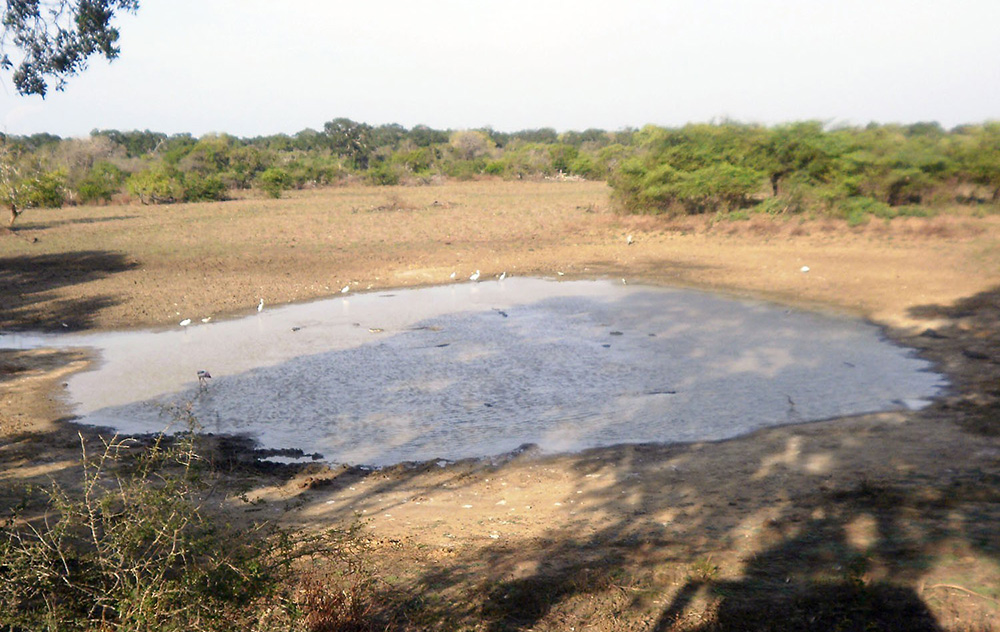
The water came quietly at first, a steady rise along the riverbanks, familiar to communities who have lived beside Sri Lanka’s great waterways for generations. But within hours, these same rivers had swollen into raging, unpredictable forces. The Kelani Ganga overflowed. The Nilwala broke its margins. The Bentara, Kalu, and Mahaweli formed churning, chocolate-brown channels cutting through thousands of homes.
When the floods finally began to recede, villagers emerged to assess the damage, only to be confronted by another challenge: crocodiles. From Panadura’s back lanes to the suburbs of Colombo, and from the lagoons around Kalutara to the paddy fields of the dry zone, reports poured in of crocodiles resting on bunds, climbing over fences, or drifting silently into garden wells.
For many, these encounters were terrifying. But to Sri Lanka’s top herpetologists, the message was clear: this is what happens when climate extremes collide with shrinking habitats.
“Crocodiles are not invading us … we are invading floodplains”
Sri Lanka’s foremost crocodile expert, Dr. Anslem de Silva, Regional Chairman for South Asia and Iran of the IUCN/SSC Crocodile Specialist Group, has been studying crocodiles for over half a century. His warning is blunt.
“When rivers turn into violent torrents, crocodiles simply seek safety,” he says. “They avoid fast-moving water the same way humans do. During floods, they climb onto land or move into calm backwaters. People must understand this behaviour is natural, not aggressive.”
In the past week alone, Saltwater crocodiles have been sighted entering the Wellawatte Canal, drifting into the Panadura estuary, and appearing unexpectedly along Bolgoda Lake.
“Saltwater crocodiles often get washed out to sea during big floods,” Dr. de Silva explains. “Once the current weakens, they re-enter through the nearest lagoon or canal system. With rapid urbanisation along these waterways, these interactions are now far more visible.”
- An adult Salt Water Crocodile (Crocodylus porosus) (Photo -Madura de Silva)
- Adult Mugger (Crocodylus plaustris) Photo -Laxhman Nadaraja
- A Warning sign board
- A Mugger holding a a large Russell ’s viper (Photo- R. M. Gunasinghe)
- Anslem de Silva
- Suranjan Karunarathna
This clash between wildlife instinct and human expansion forms the backdrop of a crisis now unfolding across the island.
A conflict centuries old—now reshaped by climate change
Sri Lanka’s relationship with crocodiles is older than most of its kingdoms. The Cūḷavaṃsa describes armies halted by “flesh-eating crocodiles.” Ancient medical texts explain crocodile bite treatments. Fishermen and farmers around the Nilwala, Walawe, Maduganga, Batticaloa Lagoon, and Kalu Ganga have long accepted kimbula as part of their environment.
But the modern conflict has intensified dramatically.
A comprehensive countrywide survey by Dr. de Silva recorded 150 human–crocodile attacks, with 50 fatal, between 2008 and 2010. Over 52 percent occurred when people were bathing, and 83 percent of victims were men engaged in routine activities—washing, fishing, or walking along shallow margins.
Researchers consistently emphasise: most attacks happen not because crocodiles are unpredictable, but because humans underestimate them.
Yet this year’s flooding has magnified risks in new ways.
“Floods change everything” — Dr. Nimal D. Rathnayake
Herpetologist Dr. Nimal Rathnayake says the recent deluge cannot be understood in isolation.
“Floodwaters temporarily expand the crocodile’s world,” he says. “Areas people consider safe—paddy boundaries, footpaths, canal edges, abandoned land—suddenly become waterways.”
Once the water retreats, displaced crocodiles may end up in surprising places.
“We’ve documented crocodiles stranded in garden wells, drainage channels, unused culverts and even construction pits. These are not animals trying to attack. They are animals trying to survive.”
According to him, the real crisis is not the crocodile—it is the loss of wetlands, the destruction of natural river buffers, and the pollution of river systems.
“When you fill a marsh, block a canal, or replace vegetation with concrete, you force wildlife into narrower corridors. During floods, these become conflict hotspots.”
Past research by the Crocodile Specialist Group shows that more than 300 crocodiles have been killed in retaliation or for meat over the past decade. Such killings spike after major floods, when fear and misunderstanding are highest.
“Not monsters—ecosystem engineers” — Suranjan Karunaratne
On social media, flood-displaced crocodiles often go viral as “rogue beasts.” But conservationist Suranjan Karunaratne, also of the IUCN/SSC Crocodile Specialist Group, says such narratives are misleading.
“Crocodiles are apex predators shaped by millions of years of evolution,” he says. “They are shy, intelligent animals. The problem is predictable human behaviour.”
In countless attack investigations, Karunaratne and colleagues found a repeated pattern: the Three Sames—the same place, the same time, the same activity.
“People use the same bathing spot every single day. Crocodiles watch, learn, and plan. They hunt with extraordinary patience. When an attack occurs, it’s rarely random. It is the culmination of observation.”
He stresses that crocodiles are indispensable to healthy wetlands. They: control destructive catfish populations, recycle nutrients, clean carcasses and diseased fish, maintain biodiversity, create drought refuges through burrows used by amphibians and reptiles.
“Removing crocodiles destroys an entire chain of ecological services. They are not expendable.”
Karunaratne notes that after the civil conflict, Mugger populations in the north rebounded—proof that crocodiles recover when given space, solitude, and habitat.
Floods expose a neglected truth: CEEs save lives—if maintained In high-risk communities, Crocodile Exclusion Enclosures (CEEs) are often the only physical barrier between people and crocodiles. Built along riverbanks or tanks, these enclosures allow families to bathe, wash, and collect water safely.
Yet Dr. de Silva recounts a tragic incident along the Nilwala River where a girl was killed inside a poorly maintained enclosure. A rusted iron panel had created a hole just large enough for a crocodile to enter.
“CEEs are a life-saving intervention,” he says. “But they must be maintained. A neglected enclosure is worse than none at all.”
Despite their proven effectiveness, many CEEs remain abandoned, broken or unused.
Climate change is reshaping crocodile behaviour—and ours
Sri Lanka’s floods are no longer “cycles” as described in folklore. They are increasingly intense, unpredictable and climate-driven. The warming atmosphere delivers heavier rainfall in short bursts. Deforested hillsides and filled wetlands cannot absorb it.
Rivers swell rapidly and empty violently.
Crocodiles respond as they have always done: by moving to calmer water, by climbing onto land, by using drainage channels, by shifting between lagoons and canals, by following the shape of the water.
But human expansion has filled, blocked, or polluted these escape routes.
What once were crocodile flood refuges—marshes, mangroves, oxbow wetlands and abandoned river channels—are now housing schemes, fisheries, roads, and dumpsites.
Garbage, sand mining and invasive species worsen the crisis
The research contained in the uploaded reports paints a grim but accurate picture. Crocodiles are increasingly seen around garbage dumps, where invasive plants and waste accumulate. Polluted water attracts fish, which in turn draw crocodiles.
Excessive sand mining in river mouths and salinity intrusion expose crocodile nesting habitats. In some areas, agricultural chemicals contaminate wetlands beyond their natural capacity to recover.
In Borupana Ela, a short study found 29 Saltwater crocodiles killed in fishing gear within just 37 days.
Such numbers suggest a structural crisis—not a series of accidents.
Unplanned translocations: a dangerous human mistake
For years, local authorities attempted to reduce conflict by capturing crocodiles and releasing them elsewhere. Experts say this was misguided.
“Most Saltwater crocodiles have homing instincts,” explains Karunaratne. “Australian studies show many return to their original site—even if released dozens of kilometres away.”
Over the past decade, at least 26 Saltwater crocodiles have been released into inland freshwater bodies—home to the Mugger crocodile. This disrupts natural distribution, increases competition, and creates new conflict zones.
Living with crocodiles: a national strategy long overdue
All three experts—Dr. de Silva, Dr. Rathnayake and Karunaratne—agree that Sri Lanka urgently needs a coordinated, national-level mitigation plan.
* Protect natural buffers
Replant mangroves, restore riverine forests, enforce river margin laws.
* Maintain CEEs
They must be inspected, repaired and used regularly.
* Public education
Villagers should learn crocodile behaviour just as they learn about monsoons and tides.
* End harmful translocations
Let crocodiles remain in their natural ranges.
* Improve waste management
Dumps attract crocodiles and invasive species.
* Incentivise community monitoring
Trained local volunteers can track sightings and alert authorities early.
* Integrate crocodile safety into disaster management
Flood briefings should include alerts on reptile movement.
“The floods will come again. Our response must change.”
As the island cleans up and rebuilds, the deeper lesson lies beneath the brown floodwaters. Crocodiles are not new to Sri Lanka—but the conditions we are creating are.
Rivers once buffered by mangroves now rush through concrete channels. Tanks once supporting Mugger populations are choked with invasive plants. Wetlands once absorbing floodwaters are now levelled for construction.
Crocodiles move because the water moves. And the water moves differently today.
Dr. Rathnayake puts it simply:”We cannot treat every flooded crocodile as a threat to be eliminated. These animals are displaced, stressed, and trying to survive.”
Dr. de Silva adds:”Saving humans and saving crocodiles are not competing goals. Both depend on understanding behaviour—ours and theirs.”
And in a closing reflection, Suranjan Karunaratne says:”Crocodiles have survived 250 million years, outliving dinosaurs. Whether they survive the next 50 years in Sri Lanka depends entirely on us.”
For now, as the waters recede and the scars of the floods remain, Sri Lanka faces a choice: coexist with the ancient guardians of its waterways, or push them into extinction through fear, misunderstanding and neglect.
By Ifham Nizam
-

 News7 days ago
News7 days agoWeather disasters: Sri Lanka flooded by policy blunders, weak enforcement and environmental crime – Climate Expert
-
News4 days ago
Lunuwila tragedy not caused by those videoing Bell 212: SLAF
-

 News3 days ago
News3 days agoLevel III landslide early warning continue to be in force in the districts of Kandy, Kegalle, Kurunegala and Matale
-

 Latest News5 days ago
Latest News5 days agoLevel III landslide early warnings issued to the districts of Badulla, Kandy, Kegalle, Kurunegala, Matale and Nuwara-Eliya
-

 Features5 days ago
Features5 days agoDitwah: An unusual cyclone
-

 Latest News6 days ago
Latest News6 days agoUpdated Payment Instructions for Disaster Relief Contributions
-

 Latest News6 days ago
Latest News6 days agoLandslide Early Warnings issued to the Districts of Badulla, Colombo, Gampaha, Kalutara, Kandy, Kegalle, Kurunegala, Matale, Moneragala, Nuwara Eliya and Ratnapura
-

 News17 hours ago
News17 hours agoA 6th Year Accolade: The Eternal Opulence of My Fair Lady


